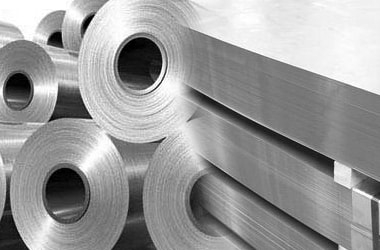National Steel Policy 2017 approved
Q. What does the National Steel Policy 2017 aim for?- Published on 04 May 17a. Enhancing domestic steel consumption
b. Ensuring high quality steel production
c. Creating a globally competitive steel industry
d. Only b and c
e. All of the above
ANSWER: All of the above

The Union Cabinet chaired by the Prime Minister Shri Narendra Modi has given its approval for National Steel Policy (NSP) 2017.
The new Steel Policy enshrines the long term vision of the Government to give impetus to the steel sector. It seeks to enhance domestic steel consumption and ensure high quality steel production and create a technologically advanced and globally competitive steel industry.
Features of NSP- Create self-sufficiency in steel production by providing policy support & guidance to private manufacturers, MSME steel producers, CPSEs
- Encourage adequate capacity additions,
- Development of globally competitive steel manufacturing capabilities,
- Cost-efficient production
- Domestic availability of iron ore, coking coal & natural gas,
- Facilitating foreign investment
- Asset acquisitions of raw materials & enhancing the domestic steel demand.
The policy projects crude steel capacity of 300 million tonnes (MT), production of 255 MT and a robust finished steel per capita consumption of 158 Kgs by 2030 - 31, as against the current consumption of 61 Kgs.
The policy also envisages to domestically meet the entire demand of high grade automotive steel, electrical steel, special steels and alloys for strategic applications and increase domestic availability of washed coking coal.
This is to reduce import dependence on coking coal from about 85% to around 65% by 2030-31.
Some highlights of New Steel Policy (source PIB):- The Indian steel sector has grown rapidly over the past few years and presently it is the third largest steel producer globally, contributing to about 2% of the country's GDP. India has also crossed 100 MT mark for production for sale in 2016-17.
- The New Steel Policy, 2017 aspires to achieve 300MT of steel-making capacity by 2030. This would translate into additional investment of Rs. 10 lakh Crore by 2030-31.
- The Policy seeks to increase consumption of steel and major segments are infrastructure, automobiles and housing. New Steel Policy seeks to increase per capita steel consumption to the level of 160 Kgs by 2030 from existing level of around 60 Kg.
- Potential of MSME steel sector has been recognised. Policy stipulates that adoption of energy efficient technologies in the MSME steel sector will be encouraged to improve the overall productivity & reduce energy intensity.
- Steel Ministry will facilitate R&D in the sector through the establishment of Steel Research and Technology Mission of India (SRTMI). The initiative is aimed to spearhead R&D of national importance in iron & steel sector utilizing tripartite synergy amongst industry, national R&D laboratories and academic institutes.
- Ministry through policy measures will ensure availability of raw materials like Iron ore, Coking coal and non-coking coal, Natural gas etc. at competitive rates.
Steel in India- Steel is one of the most important products in the modern world and forms the backbone to any industrial economy.
- India being one of the fastest growing economies in the world, and steel finding its extensive application right from construction, infrastructure, power, aerospace and industrial machinery to consumer products, the sector is of strategic importance to the country.
- The Indian steel sector has grown exponentially over the past few years to be the third largest producer of steel globally, contributing to about 2% of the country's GDP and employing about 5 lakh people directly and about 20 lakh people indirectly.
- Untapped potential with a strong policy support becomes the ideal platform for growth.